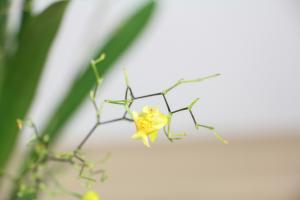Introduction
Plants are known for their unique ability to bring about a balance of oxygen and carbon dioxide in the atmosphere. Apart from this vital function, plants also release water in a process called transpiration. While transpiration is a common occurrence in plants, the reason why they release water remains a significant research question among scientists.
Plant Physiology and Transpiration
Transpiration, which is the process by which plants release water through the stomata on their leaves, occurs for several reasons. One of the primary reasons for transpiration is to transport nutrients from the soil to different parts of the plant via the xylem. Water acts as a carrier for essential minerals such as nitrogen, phosphorus, and potassium, which are vital for plant growth.
Regulation of Temperature
Plants release water through the stomata to control the temperature of their leaves. When the temperature of the leaves goes up, the plant opens up its stomata, allowing water vapor to leave the plant. This process called evaporative cooling is similar to the way sweating cools down the human body. As water evaporates from the plant, it carries off heat, thereby lowering the temperature.
Preventing Drying Out
In plants, water is essential in maintaining turgor pressure, which is responsible for keeping the plant upright. When a plant is dehydrated, the turgor pressure is lost, causing it to wilt. Thus, the release of water through transpiration is critical in maintaining the turgor pressure required for the plant’s survival.
Control of Photosynthesis
Photosynthesis, the process by which plants manufacture food, requires water, carbon dioxide, and sunlight. When plants release water through transpiration, they create a vacuum that draws water and nutrients from the roots. The nutrients help the plant manufacture food through photosynthesis, leading to growth and development.
Conclusion
In conclusion, plants release water through transpiration for several reasons, including the transport of nutrients, regulation of temperature, prevention of drying out, and control of photosynthesis. While the process of transpiration is vital to the survival and growth of plants, it also plays an essential role in the ecosystem by regulating the atmospheric water vapor, which influences the levels of precipitation in a region. Consequently, further research into the transpiration process is necessary to improve our understanding of the role of plants in the environment.

 how many times do yo...
how many times do yo... how many planted tre...
how many planted tre... how many pine trees ...
how many pine trees ... how many pecan trees...
how many pecan trees... how many plants comp...
how many plants comp... how many plants can ...
how many plants can ... how many plants and ...
how many plants and ... how many pepper plan...
how many pepper plan...































